More than 600 delegates from around the world were treated to an array of lectures, workshops and seminars covering a wide range of optometric and optical subjects (figure 1 and 2). In this first report, I will focus on a session concerned with binocular vision.
Amblyopia Management
In cases of anisometropic amblyopia, occlusion has been the mainstay of treatment for decades. Professor Susan Cotter (Southern California) led a session looking at developments in amblyopia intervention (figure 3). In keeping with much of the conference, the focus was on technological innovations.
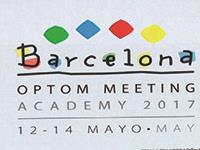
Cotter’s own work over the years had confirmed the view that, when it came to occlusion, less is more. Typically two hours a day was used, increasing up to six hours a day for severe amblyopia. She had also found that atropine was an effective alternative to patching, ‘even in older kids aged from nine to 12’.
Cotter’s work had found that the approach generally adopted by her clinic was to fully correct the ametropia with full time spectacles. After ‘six to 10 weeks’ persistent amblyopia is managed with patching or atropine and the time of occlusion increased where there is no response. Treatment is tapered once maximum acuity is achieved. Generally, studies show between 15 and 50% of children have residual amblyopia after this intervention.
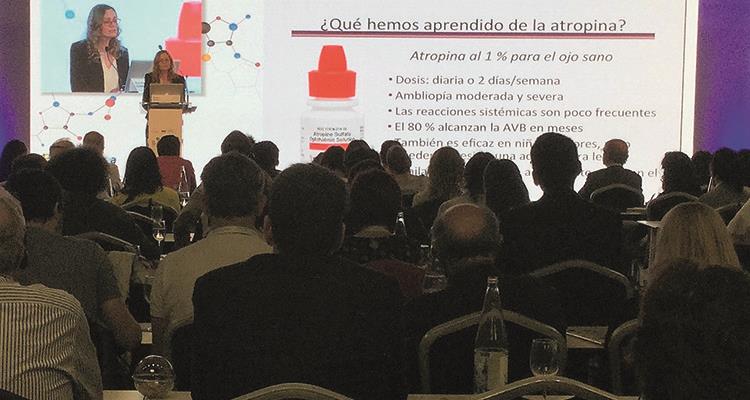
Figure 3
New Technology
Technology has been introduced to help both with compliance with occlusion and to make the occlusion more relevant to the depth of amblyopia. The AmblyZ electronic spectacles (figure 4) are an adaptive optics spectacle capable of introducing occlusion by automated darkening of an LCD lens. This can be programmed to offer transient occlusion every 30 seconds and shows promise in terms of acceptance by the child when compared with traditional patching.
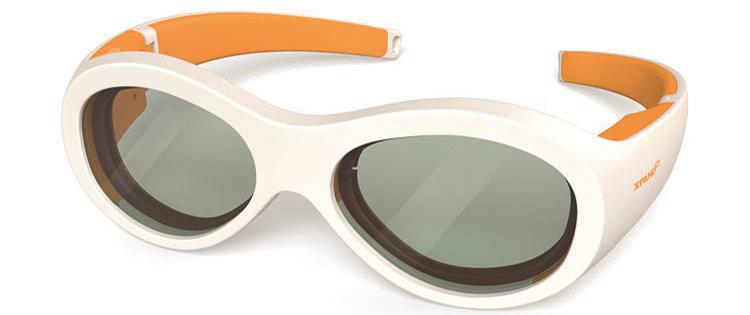
Figure 4
Cotter also introduced the concept of motion coherence threshold. This is the ratio between a motion signal before one eye and the contrast of noise presented to the other. Studies have found that by presenting noise before the sighted eye, the amblyopic eye will only see a motion signal (such as a line sweeping across the vision) when the contrast of the noise before the contralateral eye is reduced a specific amount related to the depth of the amblyopia. The process is linked to the fact that depth of amblyopia is directly related to the level of cortical suppression.
This can be exploited by dichoptic therapy, where different stimuli of controlled levels may be presented to each eye. As amblyopia is reduced, the contrast of noise signal to the contralateral eye might then be adjusted to ensure maximum stimulus to the amblyopic eye.
Computer games
Cotter noted how some studies had reported improvement in amblyopia after people had played online games, such as the Tetris-like ‘flaming blocks’. Such games can be presented dichoptically and an iPad programmed to adjust the contrast in the fixing eye as already described.
A recently completed randomised controlled study, though boasting a 96% completion rate, had also discovered that despite a reported 65% compliance, in reality only 22% had completed the game task, describing it as ‘too boring’ or ‘too difficult’ to be played for one hour. A useful reminder of the importance of the set task in any dichoptic treatment.
A new study is addressing this with the ‘more interesting’ dichoptic Dig Rush game (figure 5) while others are employing dichoptic movie viewing and already reporting improved amblyopia results.
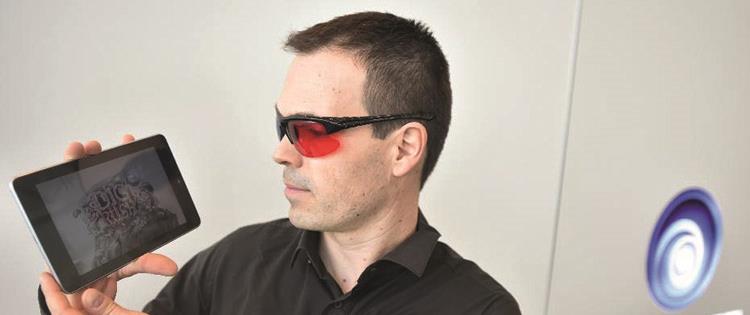
Figure 5
Another device of interest is the Eyetronics flicker glasses (figure 6) which have shown a one line mean improvement in acuity after one to two hours near work per day over 12 weeks.
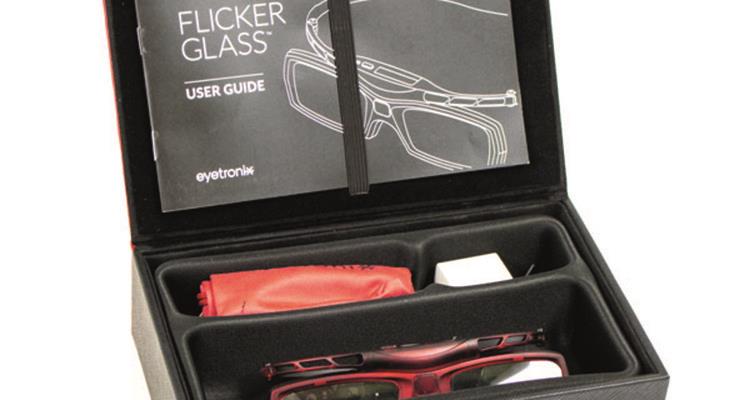
Figure 6
More leftfield approaches being tried include transcranial stimulation, acupuncture (one study suggests a two-line improvement in both a patched group and an acupunctured control group), and the use of virtual reality world simulations such as Vivid Vision. I suspect we will hear much more of this exciting use of new technology in amblyopia management in the future.
